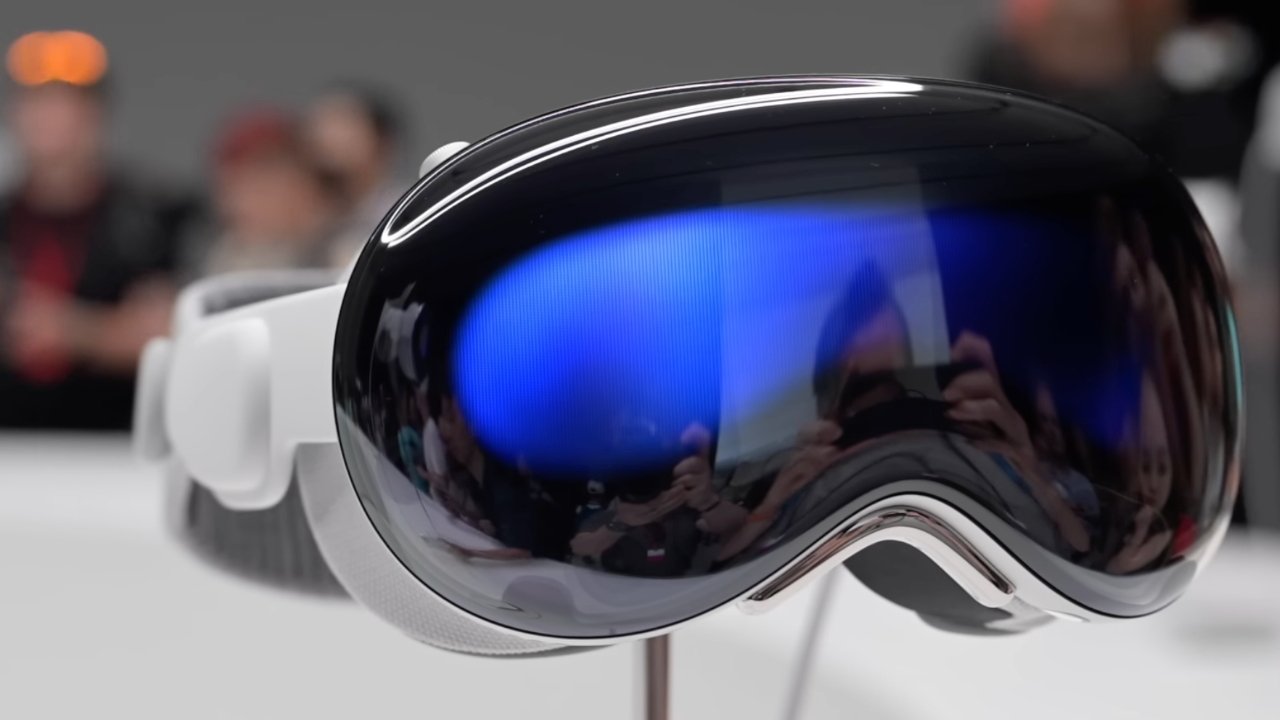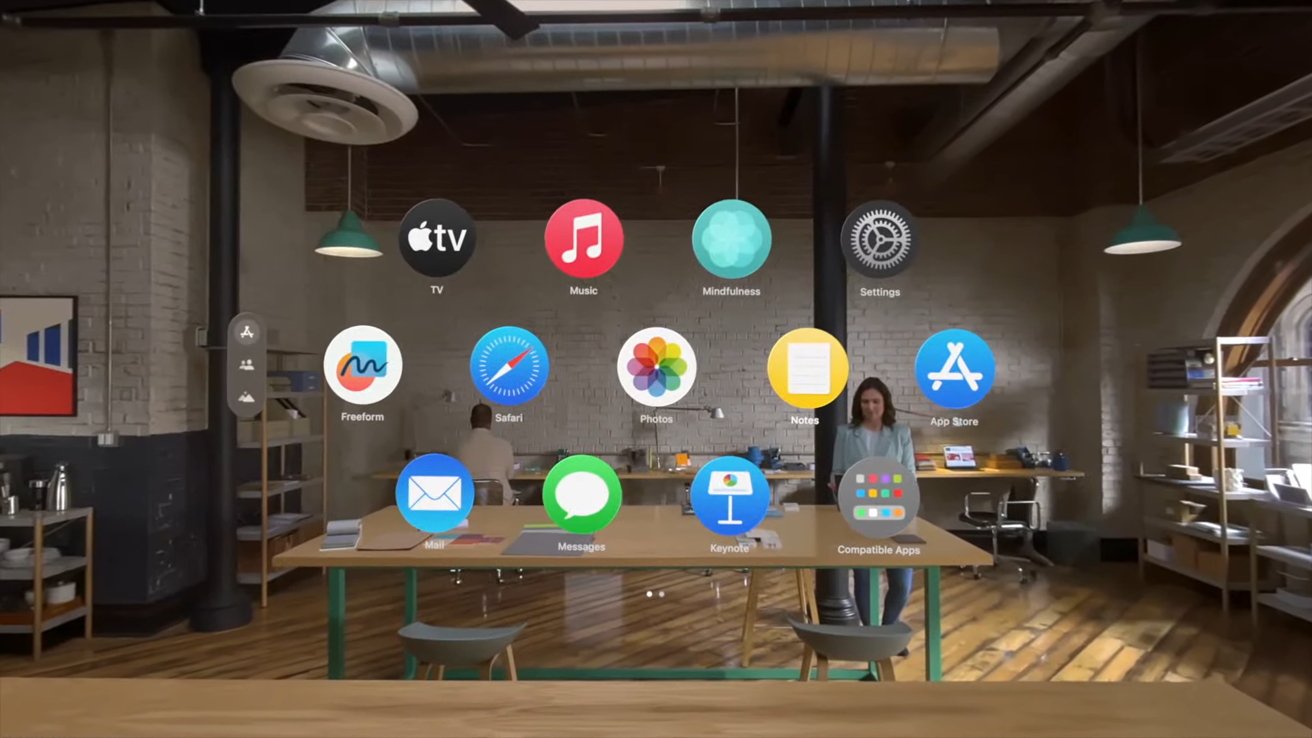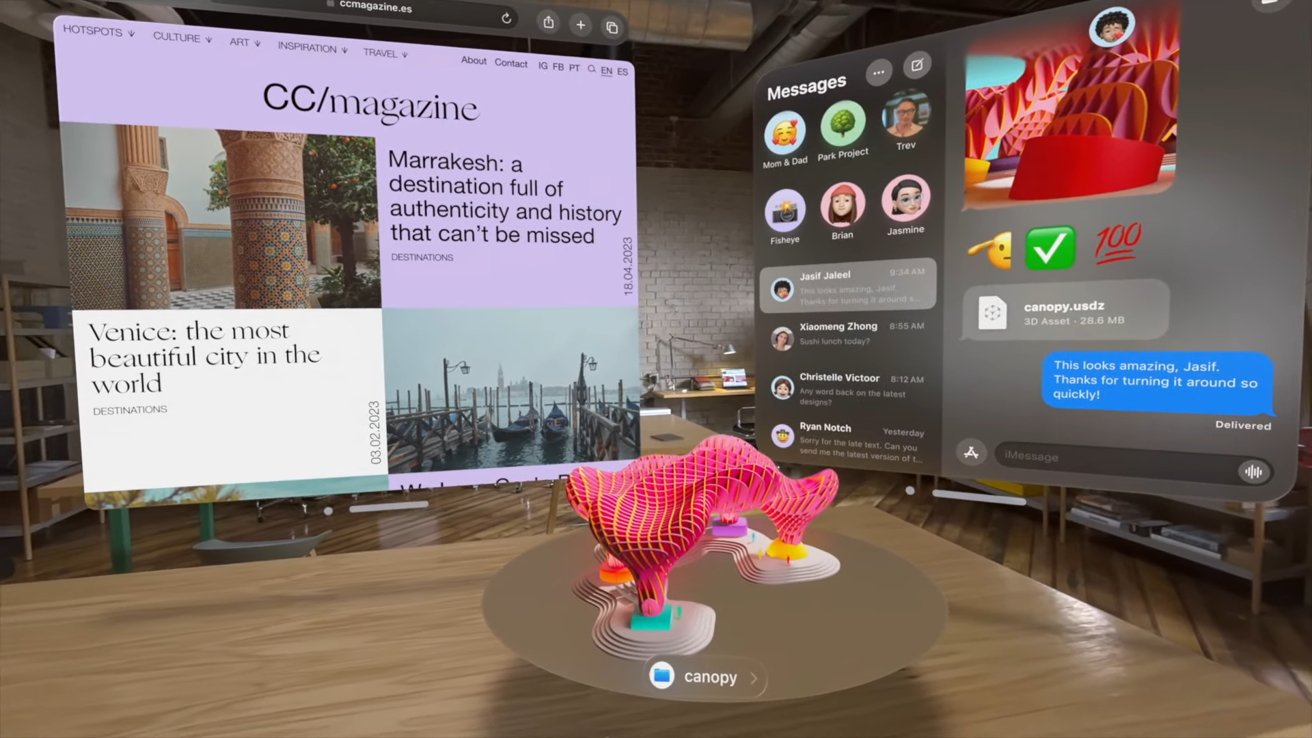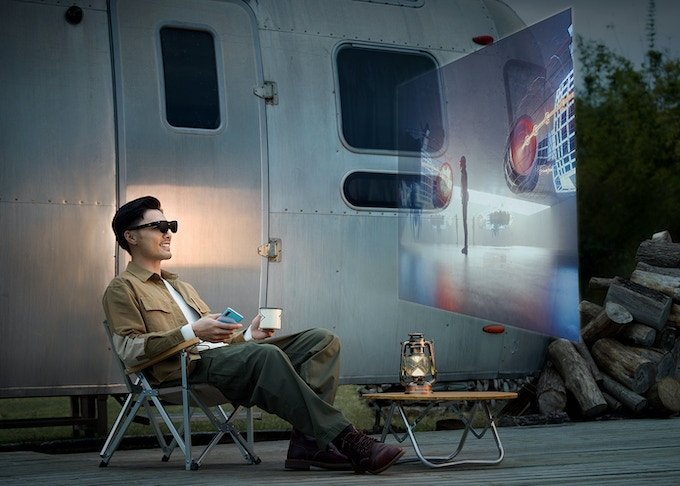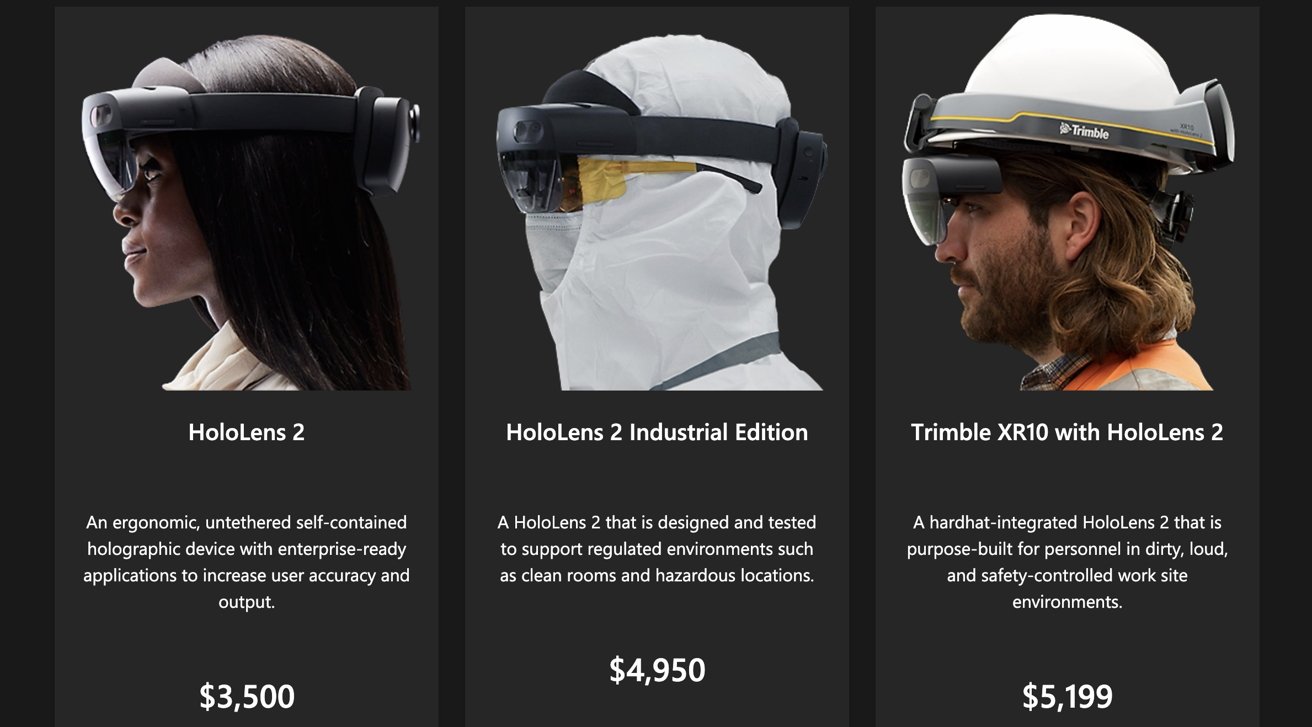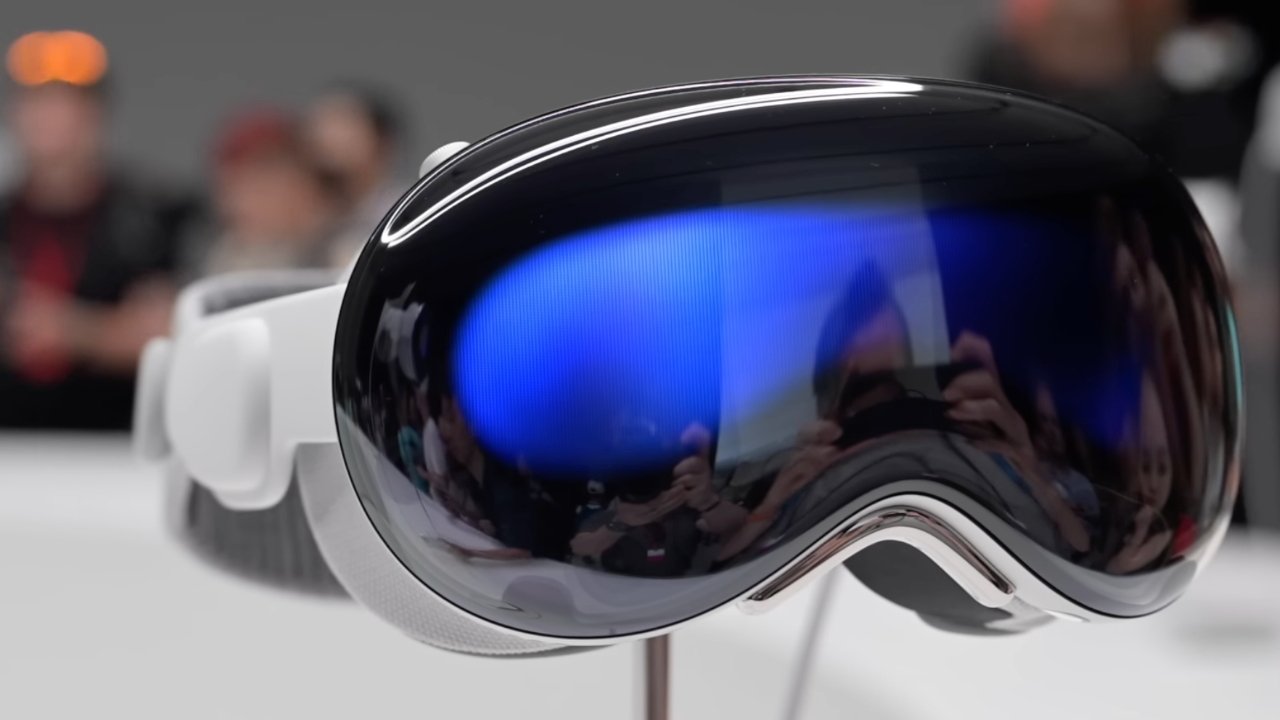
Why Apple Vision Pro has a chance at being the future of work
It’s too early to definitively say Apple Vision Pro is the future of work, but its initial proposition of unlimited project windows, rapid user interface navigation, and wide software support all suggest it can be a productivity machine.
Instead ofintroducing its Vision Pro headset by touting new games or fitness classes, it did so with a heavy dose of multitasking and emphasis on how we work.
It’s definitely easier for the company to justify a $3,500 headset if the product can assist in people’s work-related projects. Even if using it for Disney+ content and sporting events will be more intriguing.
But let’s forget the price for a minute. During the product introduction, three of the 10 individual apps appearing on the “Home View” were very productivity driven: Notes, Freeform, and Keynote.
Arguably, the Mail app, Safari, and Messages could also be heavily used for work-related tasks. Leaving only Music, Mindfulness, Photos, and TV as the other first apps people saw when Vision Pro was shown to the world.
For better or worse, Apple decided to lead with the proportion of spatial computing as a new way to work. After hands-on demos of Vision Pro, nearly everyone has corroborated Apple’s performance claims. If people are intrigued, rather than nauseated, by spatial computing, then it has a real chance to attract workers.
Let’s look at how Apple’s Reality Pro could alter the ways we work going forward by creating a new workspace paradigm and bringing people closer than ever. If it can do those things then the Vision Pro is certainly a logical next step in the way a lot of people work.
A new workspace
Apple’s first argument for spatial computing work is an “infinite canvas.” It’s not only being able to have a big screen for your Mac, having gobs of windows, or even navigating them quickly, it’s all of these things combined.
Using your entire surroundings to place apps could make ambitious people ultra-productive. Take on as many windows and virtual screens as your brain can handle.
Instead of needing to bounce back and forth between Notes, Safari, Messages, and a presentation, you could have all of those things up at the same time, surrounding you.
To move back and forth, Apple imagines you’ll only need to glance back and forth and utilize quick pinch gestures. Until brain implants come along, eye-tracking may be the fastest form of user input available.
While I can’t speak to Vision Pro specifically yet, I have used remote desktop apps on a Meta Quest 2, and a computer screen with TCL’s NXTWEAR S XR glasses.
The personal view of work documents while on the couch or away from my desk was novel in those devices. Of course, there were clarity, comfort, and input issues with those products, but the infinite canvas idea wasn’t one.
The Vision Pro headset looks like it could absolutely provide a private, vast canvas for dealing with several work projects at the same time.
After all, it would only take about two Studio Display monitors to get into the price range of Vision Pro — or one Pro Display XDR to blow past the price.
Add in Apple’s synced iCloud ecosystem from people’s iPhones and support for Magic Keyboard and Magic Trackpad and you have a real productivity machine that adapts to your space.
Collaboration and connection
Not only did Apple highlight working with Vision Pro at the office, but it also pointed out that it thinks a spatial computing device will be good while traveling.
You can, of course, collaborate on a document on your Mac while sitting in a hotel room. But you can’t necessarily do so in the same way as you would at home.
If you can replicate a muti-screen setup on Vision Pro, then your productivity doesn’t need to change when working from different locations. Spatial computing looks to allow you to bring your whole desk and office with you, rather than only your computer.
Time will tell, but I do think people will be more willing to collaborate on the go and more freely if their entire workspace is available all the time. Virtual backgrounds are a thing because a lot of people don’t want to share their environments.
Spatial computing keeps Vision Pro users connected to their environments without sharing that personal space with anyone they don’t want to. It’s a brilliant solution for slowing an increasingly intertwined home and work relationship people are finding themselves in with their jobs.
Even though it wasn’t an app shown on the Home View, FaceTime, pun intended, is an obvious collaboration star. The true collaboration and connection star of Vision Pro behind FaceTime is SharePlay.
Apple’s SharePlay technology has been around for years but it hasn’t really gotten much of the spotlight or consumer attention. Up until now, watching a movie across two iPhones was a bit awkward and more of a demo.
However, SharePlay as the linking piece for documents, presentations, and all kinds of files you’d like to share during spatial computing is much more interesting.
It’s no longer about casual one-to-one sharing. It’s much more important for working group sessions and plugging content into the headset space. Additionally, because SharePlay and FaceTime are supported across iPhones, iPads, and Macs, it’s a lifeline so a sole Vision Pro user can collaborate in a group full of mixed devices.
Work isn’t the killer app, but it’s a killer app
Apple highlighted plenty of uses for Vision Pro across a spectrum of content types, but it really focused on work and being productive. Frankly, spatial computing could end up making Macs less compelling before the iPad ever matures enough into that role.
Yes, Vision Pro is also coming for Meta and its Oculus headsets, eventually. But the other way spatial computing could find its niche in the workplace is by first wiping out Microsoft’s HoloLens devices.
The HoloLens 2 starts at exactly $3,500 and go up in price for industry-specific needs. I’ve had a chance to try the original HoloLens and it was interesting at the time but comically rudimentary compared to what Apple is showing off now.
The latest HoloLens might be dramatically better now, but based on how the company is marketing the product, it doesn’t look overly impressive. There’s no reason why certain industries couldn’t replicate their work-related uses of HoloLens on Apple’s hardware.
Most companies already have some familiarity with developing iOS apps. Plus, let’s not forget that the iPhone ended up wrecking Blackberry and changing the corporate world of mobile phones just as much as it took over the consumer space.
With computing power, amazing input from early hands-on reports, and a thriving software development ecosystem it’s hard to see how spatial computing with Vision Pro isn’t the future of work, even if consumers are slow to adopt it.

